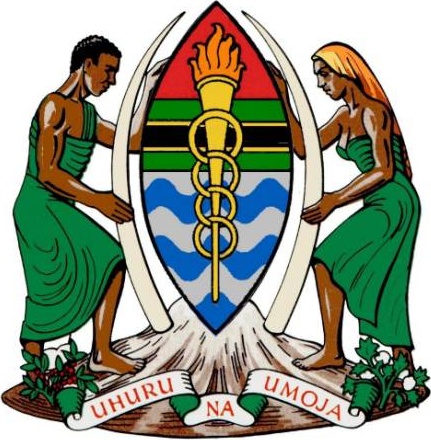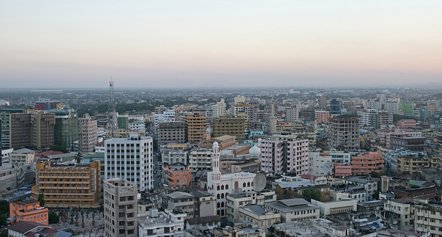Nordic adult educators encounter Tanzanian development in the 1960s and 1970s
In 1962 Sweden was said to be the country with the most extensive correspondence education enrolment per capita in the world. This was explained with reference to its sparse and widespread population with a high level of literacy, an efficient publishing industry and reliable postal services. None of these conditions existed in Tanganyika (renamed Tanzania in 1964), yet one of Sweden’s earliest forays into development co-operation focused precisely on expanding correspondence education in the former British colony. This somewhat counterintuitive historical encounter between the Nordics and East Africa was the result of the active role played by Swedes in international organisations, where they encountered the agenda of postcolonial states and sought to offer solutions based on their personal experiences of mass correspondence education back home in Sweden. However, the obvious difficulties of adapting that experience meant that they were quite ambivalent towards the ideal of “exporting” a successful Nordic or Swedish “model” to postcolonial Africa.

Relationship between the Nordics and Tanzania
Tanzania became independent from the UK in December 1961. Between 1962 and 1983, it was one of the largest recipients of foreign aid in the world. Of the 50 aid donor countries, the Nordics have been the most important over time and have provided Tanzania with on average 30% of its total bilateral aid. Sweden alone has provided approximately half that share. Tanzania received over 10% of Sweden’s total foreign aid during the second half of the 1960s, and that share increased to around 15% during the years that followed. From an early stage, Swedish aid to Tanzania included support to education, which was gradually concentrated on adult education and vocational training.
The emerging relationship between the Nordic countries and postcolonial Tanzania was characterised by ideological solidarity on the one hand, and hard-nosed political manoeuvring on the other. The depictions of this relationship offered by researchers and commentators have ranged from harsh criticism to praise.

PICTURE: The coat of arms for the United Republic of Tanzania which was established in 1964. It reads "Freedom and Unity" in Swahil. Photo: Wikimedia Commons, Public Domain.
The historian Jarle Simensen characterises the Nordics as naïve in their dealings with the Tanzanian regime; they were unwilling to see the realities of Julius Nyerere’s increasingly authoritarian policies. Nyerere led the country as president from 1965 to 1985 before which he was first prime minister and then president of the country’s precursor state Tanganyika from 1961 to 1964. Nordic support for Tanzanian co-operatives has even been denoted a ‘bleak chapter’ in the history of foreign aid. On the other hand, scholars examining Tanzania’s adult education policies have tended to highlight its relative success crediting the Tanzanian government for educating the citizenry and the Nordic donors for their financial backing and continuous support
It is possible to combine these conflicting narratives by concentrating on hitherto overlooked areas, such as, correspondence education, and the areas between what has tended to be described as either ‘laudable Nordic idealism’ or ‘problematic Nordic pragmatism’ (and sometimes vice versa).
The organisers of correspondence courses in Tanzania in 1960s
The Co-operative Educational Centre (CEC) in Moshi was founded in 1964 and jointly initiated by the Nordic co-operative movements. The CEC’s main objective was to offer training for the rank and file of Tanzania’s rapidly growing rural co-operative primary societies. The number of students increased over its first years, and between 1965 and 1969, 6,100 individuals enrolled. By the end of 1970, eight correspondence courses had been produced by the CEC, including topics such as ‘Savings and Credit Societies’ and ‘Book-keeping’. In contrast, the National Correspondence Institute (NCI) was created through a bilateral agreement between the Tanzanian and Swedish governments. It was based in Dar es Salaam and established in 1971 and was Swedish-funded. It was a central, national institute for mass correspondence education under the auspices of the Institute for Adult Education in Dar es Salaam. By July 1974 there were 8,600 students enrolled, and two years later the number had reached 20,000. While the Moshi centre had been launched with a handful of employees, by 1974–1975, the NCI was already employing 64 Tanzanians on full-time contracts. From the start the most prioritised course at the NCI was ‘Political Education’, which was to teach Tanzanians about Nyerere’s national ideology of ‘socialism and self-reliance’. Addressing staff at the NCI, the Minister of National Education proclaimed that the course was to be the “star that guides all our plans of Adult Education.”
Becoming truly “international”
Existing research has tended to focus on the ideological affinities between the Nordic Social Democratic parties and President Nyerere’s socialist TANU party. Yet a focus on the actual institutions which carried out education aid suggests that the relationship between Tanzania and Sweden were shaped elsewhere, including within international non-governmental organisations. Both the foundation of the Co-operative Educational Centre in Moshi and the funding of the National Correspondence Institute can be linked to specific organisations adapting to the geopolitics of decolonisation and the related political thrust towards implementing, managing and leading ‘development’. Swedes played a prominent role in these organisational transitions. Thus, it was through their involvement in international non-governmental organisations that individual Swedes could muster the clout to influence their developing domestic governmental aid policy.
Organisations and acronym:
| CEC | The Co-operative Educational Centre |
|---|---|
| ICA | International Co-operative Alliance |
| ICCE | International Council of Correspondence Education |
| KF | Swedish Co-operative Union (Kooperativa Förbundet) |
| NIB | Agency for International Assistance (Nämnden för internationellt bistånd) |
| NKI | Nordic Correspondence Institute (Nordiska Korrespondensinstitutet) |
| Nordic Co-operative Tanzania Consorium (Nordiske Kooperativa Tanzaniakonsortiet) | |
| SIDA | Swedish International Development Cooperation Agency (Styrelsen för internationellt utvecklingssamarbet) |
Examples include:
-
International Co-operative Alliance:
The Nordic involvement in the Co-operative Educational Centre (CEC) in Moshi can be traced to the International Co-operative Alliance’s (ICA) attempt to become less Eurocentric. Founded in 1895, the ICA began engaging in the issue of co-operative development in earnest at its 1957 congress in Stockholm. The Swede Dr. Mauritz Bonow was elected vice-president and became president in 1960, a position he would hold until 1975, and led the move to set up a regional ICA headquarters in New Delhi. That office was largely funded by Kooperativa Förbundet (the Swedish Co-operative Union (KF)). During this time, Bonow became a board member of the Swedish aid authority Nämnden för internationellt bistånd (the Agency for International Assistance (NIB)), and was in that capacity closely informed about the launching of official co-Nordic assistance efforts in Tanzania. In his inaugural Presidential speech, Nyerere emphasised the role that the co-operative movement would play in the establishment of ‘a true socialist society’. Since the co-operative movements in the Nordic countries had a long and successful history in largely agricultural societies, the national co-operative unions in Sweden, Denmark, Norway and Finland soon began planning for a Nordic educational centre for Tanzanian co-operatives. The joint preparations, led by Bonow with his influential positions in both national and international organisations, led to the foundation in May 1964 of Nordiska Kooperativa Tanzaniakonsortiet (the Nordic Co-operative Tanzania Consortium). It was this joint Nordic body of co-operatives, again led by Bonow, that lay behind the setting up of the Co-operative Education Centre in Moshi in 1964.

PICTURE: The National Correspondence Institute was established in Dar es Salaam in 197. Photo: Muhammad Mahdi Karim. Wikimedia Commons, GFDL-1.2.
-
International Council of Correspondence Education:
The Swede Lars-Olof Edström worked for the private correspondence institute Nordiska Korrespondensinstitutet(NKI), but was also NIB’s educational advisor and played a key role at the International Council of Correspondence Education (ICCE), not least at their congress in 1965 which for the first time was held outside the US – in Stockholm. A quarter of participants at this congress were Swedish and for the first time one of the main themes was correspondence education in developing countries. The ICCE changed from a largely North American organisation in the 1950s to an increasingly global membership by the mid-1960s, and this congress marked the shift. A pre-meeting was also held to ascertain how Swedish aid funds could best be used in the field of correspondence education, and Edström played a crucial role in his capacity as adult educator, representative of the ICCE and member of the fledgling Swedish aid bureaucracy.
A few weeks later, NIB was replaced by a new aid agency SIDA (the Swedish International Development Cooperation Agency, which it is still called today). Edström became Head of the Education Division of SIDA in 1972 and was a driving force in the Swedish-Tanzanian process of setting up the NCI in Dar es Salaam.
The discourse of development and the increasing flows of foreign aid offered organisations like these a concrete way to live up to their international designations. In both the ICA and the ICCE Swedes played a prominent role in this expansion. They did so by identifying and articulating apparently useful national experiences that could be integrated into the government’s rapidly expanding program of foreign aid. They also in effect extended the field of adult education into the realm of Swedish foreign policy. The actors that drew Swedish adult education into the aid rush, such as Bonow and Edström, successfully facilitated and utilised the government’s ongoing attempts to mould a new active foreign policy.
Was the Swedish model being exported?
NGOs and international professional associations played a formative role in articulating development challenges and formulating potential solutions which the Nordic governments then incorporated into their expanding foreign aid agendas. Interestingly, the Swedish actors at once owned and disowned the policies they were seeking to define and adapt as aid: while much was made of ‘Africanising’ education methods in Tanzania, there was a simultaneous tendency to frame them as essentially ‘Swedish’ when communicating back home. In this way all the actors involved in some sense benefitted from the formation of partnerships through policy lending and borrowing. Aside from the Tanzanian government, which received funding and could pursue its ideological agenda, Nordic governments, cooperatives and professional organisations also stood to gain from playing their part in the ongoing aid rush. The pressing global development agenda offered new ways to gain political legitimacy, claim cultural relevance, and activate the grassroots. Getting involved was both considered a moral necessity and a strategic opportunity.

PICTURE: Was a genuine export of the Swedish education model taking place? Or was it merely a case of mutual inspiration and exchange of knowledge. Photo: Mikael Kristenson. Unsplash, Public Domain.
Simultaneously, not only were the organisations changing through involvement in foreign aid, but so were the ‘contents’ of their educational methods and practices. In the throes of decolonisation, Nordic declarations of Third World solidarity led to inventories of what, financial and rhetorical support aside, these countries actually had to offer their new allies in the global South. At this very practical level, the resort to a general ‘ideology of goodness’ which researchers have identified in the Nordic countries as an explanation for their readiness to provide foreign aid, simply did not suffice. Rather, whatever ideological production was going on at home, in practice there were few simplistic ambitions of directly ‘exporting’ successful Nordic or Swedish ‘models’. Right from the start such visions were complicated by the hands-on challenges of working in international settings. Instead of outright ‘model export’ it seems more fruitful to think in terms of the pragmatic identifying of adaptable national experiences. Through the subsequent interactions between individuals, NGOs and state authorities those experiences became re-contextualised, lent, transformed and borrowed. One outcome of those processes was that the resulting educational practices were often rhetorically re-nationalised and strategically branded as essentially Swedish, Nordic or Tanzanian. However, each label was always a simplification.
Further reading:
This article is based on Nikolas Glover's ‘The “acidification” of national experiences: Swedish-supported correspondence education in Tanzania, ca 1960–1975’, Nordic Journal ofEducation History, 6, 1 (2019) pp. 25-47.
See also:
-
Abel G. M. Ishumi, ‘External aid: A lever for social progress in developing countries? A case study of SIDA-supported educational projects in Tanzania, 1970–1990s’. International Journal of Educational Development 12, 4 (1992), pp. 265–76.
-
Gunnar Lind Haase Svendsen and Gert Tinggard Svendsen. ‘The Global Development Race and the Samaritan’s Dilemma: Development Aid Discourse in Danish Agriculture’. Contemporary European History 17, 1 (2008).
-
Kristian Ravn Paaskesen, ‘A Bleak Chapter in Nordic Development Aid History? The Nordic Co-operative Asssistance Project in Tanzania’, Scandinavian Journal of History 35, 4 (2010), pp. 451–70.
-
Magnus Dahlstedt, and Henrik Nordvall, ‘Paradoxes of Solidarity: Democracy and Colonial Legacies in Swedish Popular Education’, Adult Education Quarterly61, 3 (2011), pp. 244–61.